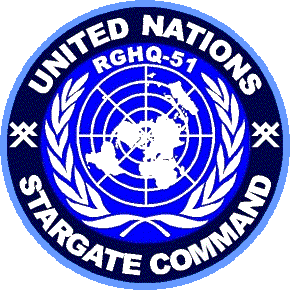Precedence codes are a method of grading and labelling the content of net-wide announcements and individual messages addressed to specific stations:
-
Firstly, when a net wide announcement is going to be made it is prefixed with the appropriate Precedence code, serving as a "bing-bong" pay attention people, a general announcement is about to be made, the code identifying the type and/or degree of importance that the content of the message possess'.
-
And secondly, it enables station operators to organise the outgoing and incoming messages in to a queue, ready for transmission to the addressees in order of importance.
When running a station, where in messages are either written down, or verbally requested by a third party, each such message is given a code letter, being marked with either; Y, Z, O, P, R or S, so as to place them in their correct order of precedence. Note that the highest level (Y) is for government use ONLY, and is included here as the Corps may become subject to a FLASH OVERRIDE message, and so our operators need to know how to deal with it.
As only the originator of a message knows it's importance, it is they who must classify it in terms of Precedence, as this is not the responsibility of the station operator. However, unlabelled messages must be queried by the station, and not put aside or have it's Precedence assumed. If no answer can be gained the message should be assigned FLASH Precedence and a report made to the relevant Officer Commanding to prevent it's reoccurrance.
The 6 categories of precedence are as follows:
|
Code
|
Precedence
|
Definition
|
|
Y
|
FLASH OVERRIDE
|
Interrupts, overides and precedes all other precedences, including FLASH.
Message must be sent without delay.
Used by the government of the state for instant strategic level messaging to the military as a whole.
Brevity is mandatory, details can follow.
The highest precedence. NOT used by the military itself.
|
|---|
|
Z
|
FLASH
|
Interrupts, overides and precedes all lesser precedences.
Message must be sent within no more than 10 minutes.
Used for urgent combat support related announcements across an entire network.
Brevity is mandatory, details can follow.
The highest precedence used by the military, including the UNMC (UNSGC).
|
|---|
|
O
|
IMMEDIATE
|
Interrupts, overides and precedes all lesser precedences.
Messages are dispatched within 30 minutes in the order of receipt.
Used for follow up combat support related announcements across an entire network.
Brevity is not mandatory, and can include more detail.
|
|---|
|
P
|
PRIORITY
|
Does not interrupt or overide messages of a lesser precedence, but does precede them at the first opportunity.
Messages are dispatched within 3 hours in the order of receipt.
Used for any announcements across an entire net, for which ROUTINE would be too slow.
Brevity is not required, and can include significant details.
|
|---|
|
R
|
ROUTINE
|
Does not interrupt or overide messages of a lesser precedence, but does precede them at the first opportunity.
Messages are dispatched no later than the beginning of the next duty day, in the order of receipt.
Used for any announcements across an entire net, concerned with normal operations that justifies transmission by radio, which cannot be sent by other means such as dispatch rider (messenger), and/or may require to be logged, recorded or otherwise documented.
Messages can contain large amounts of data, but not so great as to block the system. Often such messages have to be sent in several parts to allow other traffic to flow.
|
|---|
|
S
|
SERVICE
|
This precedence is subordinate to all others.
Dispatched as and when convenient.
Announcements are concerned with the management of the radio network.
The messages tend to be brief and technical.
|
|---|
|
Footnotes:
1. The letter "Z" is used for FLASH, as it's appearance is reminiscent of a lightning bolt.
2. The letter "O" is used for Immediate because originally the full title for this degree of precedence was "Operational Immediate".
End of Document
|

